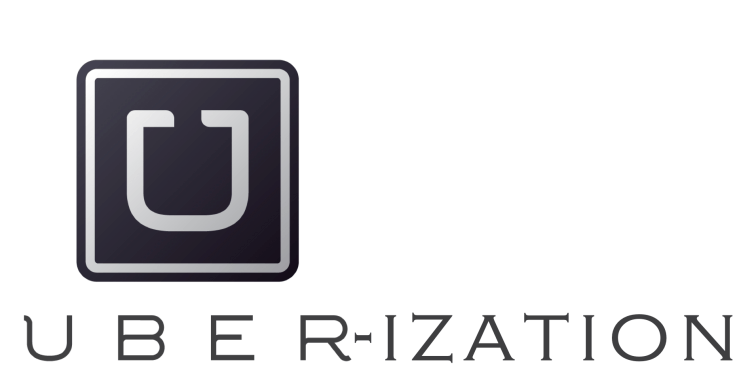Firm Management
Is Your Audit Practice Ready to be Uberized?
More than two decades ago, industry auditing staples such as GoSystem Audit, Fast-Governmental, and Accountant’s Trial Balance were quickly replaced by a new generation of more robust audit engagement binders including CaseWare and CCH Engagement ...
Oct. 13, 2016

More than two decades ago, industry auditing staples such as GoSystem Audit, Fast-Governmental, and Accountant’s Trial Balance were quickly replaced by a new generation of more robust audit engagement binders including CaseWare and CCH Engagement (formerly known as ePace). While audit binder applications evolved and included some integration and export capabilities, most firms continued to utilize their same PPC-directed audit approach and work programs, as well as adopting a third party secured email or portal solution.
The different vendors’ applications traditionally did not integrate well, but this mismatch of applications became the status quo for most firm’s audit production workflow. Evolution within the auditing realm was somewhat stagnate compared to what was happening in the rest of the business world, where hyper efficient web-based applications were able to displace levels of management and bureaucracy, while also providing a better end-user experience. Think NetFlix, Amazon, Airbnb, and of course Uber, which has not only improved the local transportation experience for passengers, but made it a less expensive and more efficient for everyone involved. This concept of Uberization is now impacting the auditing world and is on track to bring on the next great evolution in audit efficiency. Below we discuss five audit focused applications worth watching:
AdvanceFlow: Thomson Reuters has built a cloud audit suite that is browser based, reducing accounting firm’s workstation maintenance, application support, and archival requirements so auditors can focus on auditing instead of dealing with local technology issues. Thomson integrated a trial balance application, PPC’s workpaper programs, and their established GoFileRoom workflow and document archival capabilities for the AdvanceFlow platform. This integration expands into tax production as well where data can be then imported into Thomson’s UltraTax and GoSystem Tax RS products. One of the primary benefits of cloud-based audit suites is that they are always available (7/24) and do not require local laptop applications be installed, maintained, and synchronized, as auditors work on the most current files and the vendor handles the updates, backup and recovery.
AuditFile: Similar to how the automated tax bookmarking tools forced standardization of tax files within tax practices, web-based audit suites force firmwide audit process standardization all the way through the delivery of the financial statements. AuditFile is another comprehensive cloud-based audit, review, and compilation tool which integrates client planning, workflow, trail balance and financial statement generation into a single seamless application. AuditFile can be accessed on a tablet and smartphone allowing managers to see the status of engagements as well as post and respond to review comments. With all data in the cloud secured by 256 bit encryption, firms don’t have to worry about the cyber security impacts of a laptop being lost or stolen. AuditFile also integrates with cloud-based accounting products, QuickBooks Online and Xero to further streamline the data acquisition process.
SuraLink: Auditors spend a lot of time accumulating client documents through a variety of means including standalone portals, secured file sharing, and email attachments which then need to be consolidated, and unfortunately, is often done inconsistently in firms. Suralink has created a secure file hosting environment that targets collaboration between the client and the firm to collect and organize source documents needed for the engagement. Their Dynamic Request list (PBC) makes it easy for clients to provide data and ask questions, as well as for the auditor to respond securely in real-time on any mobile device through a single application (just like Uber!).
Valadis: Audit pundits have long touted the value of auditing “through the computer” and the benefits of data extraction tools such as ACL, IDEA, and Monarch. Unfortunately, these tools were not as intuitive as using Excel, so many auditors fell back to converting any client financial data to Excel and individually developed manual processes to organize and validate the data. Valadis has “Uberized” this process for clients using QuickBooks, Xero, Sage, Microsoft Dynamics, etc. by importing a complete copy of the client’s accounting database and automatically doing a comprehensive analysis that identifies errors and anomalies, which the auditors can then review online. This saves time and also standardizes the output.
Rivio: CPA.com and Confirmation.com have teamed up to create a secure clearing house for private company financial reports which mitigates the risk of a client altering a report after being issued by the CPA firm. Instead of the CPA firm forwarding a PDF of the report to the client or going through the process of requesting the client to sign a release so the firm can send it, the firm would post the financial report in the secured portal and the client would provide discrete access to their bankers, lawyers and investors, which do not have to disclosed to the statement issuing CPA firm. This site basically mimics the SEC’s EDGAR database but for private organizations to minimize the risk of client’s fraudulently altering the information.
Cloud and mobile technology has already “Uberized” entire industries and is now infiltrating professional services as evidenced by this latest round of audit applications that are helping firms be more efficient and interact with clients more effectively.
———-
Roman H. Kepczyk, CPA.CITP and Lean Six Sigma Black Belt is Director of Consulting for Xcentric, LLC and works exclusively with accounting firms to optimize their internal production workflows within their tax, audit, client services and administrative areas. His Quantum of Paperless Guide (Amazon.com) outlines 32 digital best practices all accounting firm partners need to understand today.
